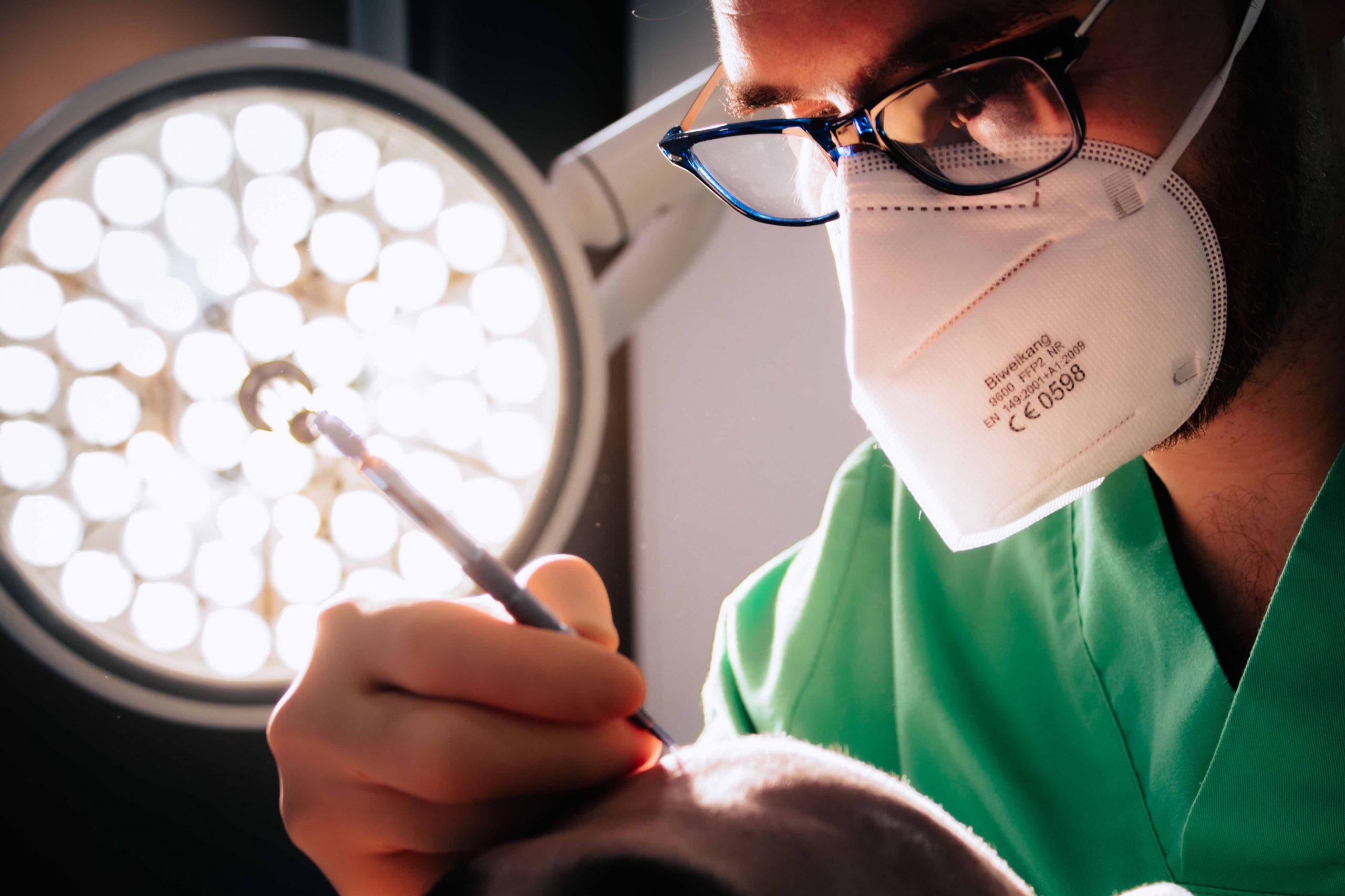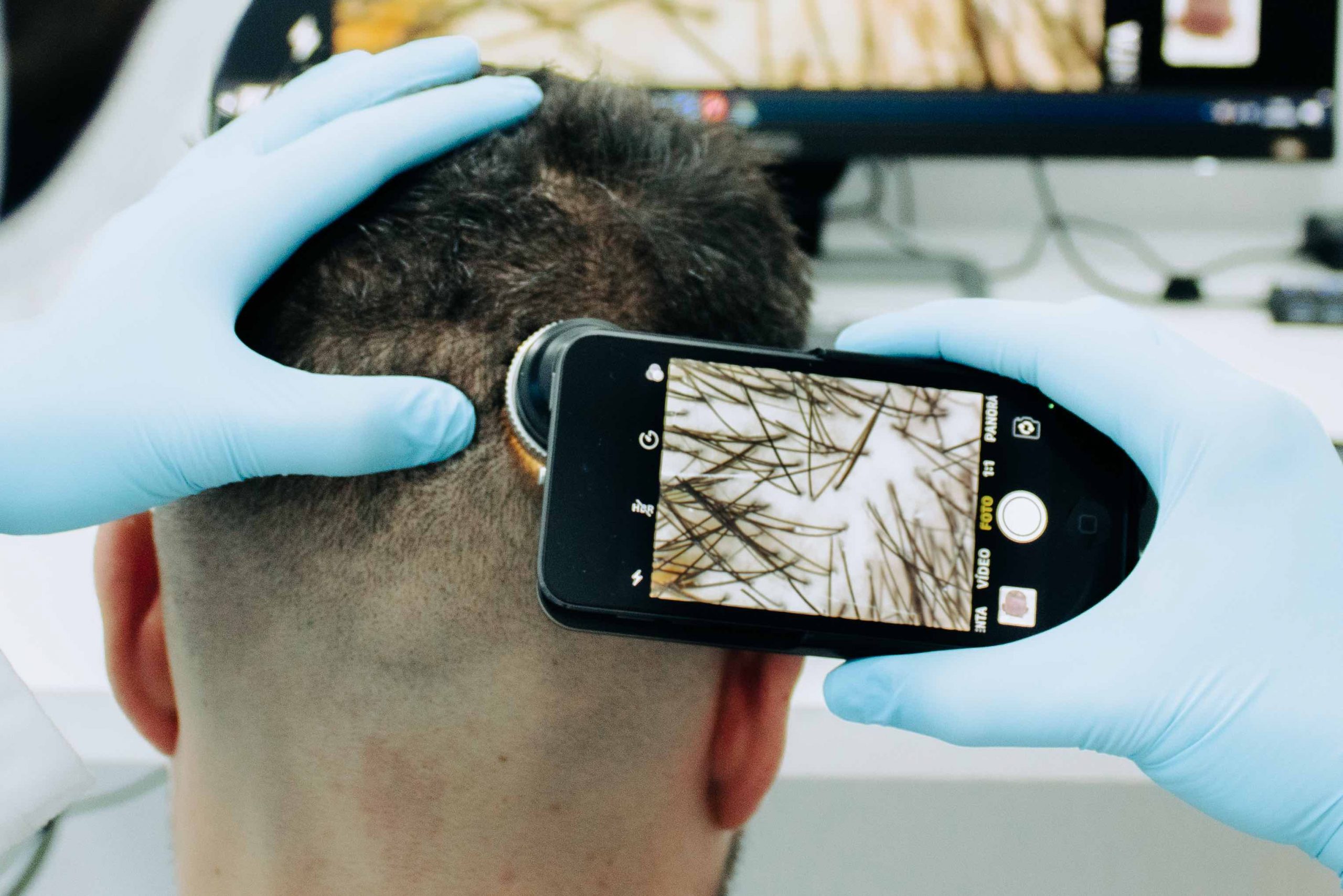
Alopecia is a disease that affects a high percentage of the population, as indicated by the rate of alopecia in Spain. Normally, it begins with irreversible hair loss in the front part, giving rise to the famous receding hairline, and from here, baldness begins to progress towards the back. What can be done in these cases to recover the hair from the entrances? Is hair grafting at the entrances a good option?
En Hospital Capilar We are experts in hair grafting in Madrid, Murcia and Pontevedra. In our blog We tell you about the procedure of a hair transplant in the entrances, the results it offers and in which cases it is recommended to recover the hair in the entrances.
A capillary graft in the entrances is understood as a outpatient and minimally invasive surgery. It is currently the only method to recover hair from the entrance area that was lost due to alopecia, usually androgenic. The hair treatments to treat baldness are aimed at stopping hair loss and improving the quality of native hair, but they will not cause the hair that was lost to grow back, so the FUE hair implant It is the only technique with which to have hair again in the areas where it has stopped growing.
Hair grafting in the entrances requires a medical diagnosis to determine the feasibility of said intervention. If the medical team determines that the patient is suitable for hair implantation with expectations of achieving aesthetic results that meet the patient's expectations, the person in question goes through the different phases of a hair transplant.
The first thing that is carried out, after having shaved the head, is the front line design. To do this, the surgeon takes into account the patient's preferences, but also other aspects such as his physiognomy.
Hair transplant does not require general anesthesia, only local, so the patient remains awake and conscious during the intervention. The application of local anesthesia is the only phase that bothers in a capillary implant and, for this reason, in Hospital Capilar we have the pre-anesthesia with which we managed to reduce the pain considerably.
Once the area is asleep, the health team proceeds to extract the necessary follicular units, that is, the "small bags" that contain the hair from which, after a while, the hair will grow. These follicles are extracted from the area that is not affected by alopecia, known as donor zone. It is done individually with a punch with micromotor thus reducing possible damage to native hair and without leaving visible scars. As they are extracted, they are placed in Petri dishes for better conservation.

The next step in a hair transplant at the entrances is to make the incisions precisely in the area of the entrances. In Hospital Capilar our medical team employs a sapphire scalpel mainly because it offers better results by reducing bleeding, promoting healing and allowing greater precision and angulation in the incisions.
The last phase of a capillary graft at the entrances is the implantation of the previously extracted follicular units in the cavities made by the surgeon. Once finished, the patient returns home and begins the hair implant postoperative. The next day you must go to the 24 hour cure in clinic, as well as subsequent reviews.
The results of a capillary graft in the entrances are definitively given once the first year of the intervention has elapsed. These are natural, since it is the patient's own hair that is implanted. Of course, it is necessary to resort to medical treatment to stabilize the alopecia and maintain the native hair, since otherwise the disease progresses causing the destruction of the hair follicles.
The process of growing new hair after a hair implant goes through different phases.
During the first month after the capillary implant, the scabs, which we must not manipulate or start in any case. And, in addition, a phenomenon known as shock loss during which the implanted hair falls out. Our team of doctors states that this is a normal process and the hair will grow back as the hair follicles do not fall out.
Once the 6 months have elapsed, the first changes can be seen. It could be said that after the sixth month, 50% of the result is reached. New hair can already be seen in the intervened area, although it would still need to grow.
One year after the capillary implant, the patient can already appreciate the definitive results of his capillary graft at the entrances.

Hairless areas? Ticket appearance? Do you want to stop the advance of alopecia? Request your medical diagnosis at no cost and recover your hair from the hands of an expert medical team. We will be happy to assist you!
Sanitary Reg. No. Pontevedra: C-36-003121 Sanitary Reg. No. Madrid: C517593 Sanitary Reg. No. Murcia: 30800014


Copyright © 2021 - Legal Notice and Privacy Policy - Cookies policy